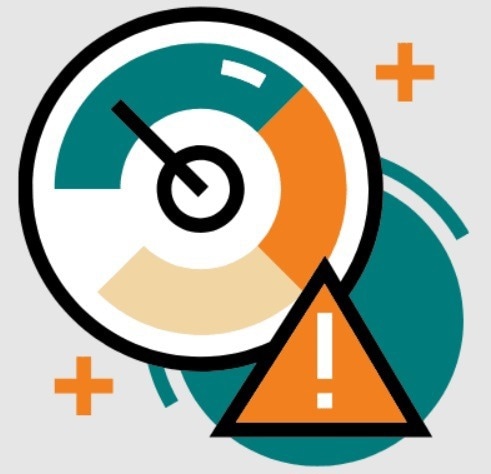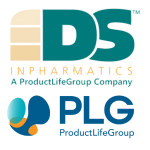The FDA has been leading investigations into nitrosamine impurities in certain drug products. Since 2018, it has been discovered that several drug products, such as Angiotensin receptor blockers (ARBs), ranitidine, nizatidine, and metformin, contain unacceptable levels of nitrosamines. Nitrosamines are categorized as potential human carcinogens based on animal studies, and there has been an urgent need to eliminate any associated risks to patients.

Image Credit: DSI, a PLG Company
The Food and Drug Administration (FDA) has outlined industry guidance for Control of Nitrosamine Impurities in Human Drugs (Rev 1-Feb2021) authorization holders (MAHs) on risk measures to tackle nitrosamine impurities.
The European Medicines Agency (EMA) and other health bodies have followed a similar approach. The FDA consulted MAHs to review all chemical and biological human medicines to determine the possible presence of nitrosamines and to subsequently test products deemed at risk.
This guidance encourages appropriate steps manufacturers of APIs and drug products should take to identify and prevent unacceptable nitrosamine impurities in pharmaceutical products. The guidance also outlines the conditions that lead to the introduction of nitrosamine impurities.
In line with ICH Q9 principles, the drug product (DP) manufacturer should conduct a risk assessment to set the control strategy for nitrosamines impurities as part of overall risk management to mitigate the occurrence and potential risk for impurities in the DP.
Companies must implement the appropriate control strategies to ensure the presence of these impurities is prevented or limited and, where necessary, to enhance their manufacturing processes.
The following steps should be taken by API and drug product manufacturers to mitigate nitrosamine impurities in products:
Step 1: Risk Assessment – It was required that the risk assessment outcome to determine what active substances and finished products are at risk of N-nitrosamine contamination should have been reported by 31 March 2021 for all commercial drug products and any applications for new drugs.
Step 2: Confirmatory Testing – If a risk was determined in Step 1, confirmatory testing on the products was required, and the presence of nitrosamines above acceptable levels was confirmed and reported as soon as possible.
Step 3: Update of Marketing Authorization – Report changes applied to avoid or limit nitrosamine impurities in APIs and drug products to FDA. This includes submitting any drug master file (DMF) amendments to conform with 21 CFR 314.420© and the necessary changes to applications approved as required in line with 21 CFR 314.70 and 314.97 and pending applications under 21 CFR 314.60 and 314.96.
DS InPharmatics (DSI) can assist MAHs and ensure they comply with the requirements in several ways:
Step 1: Risk Assessment
Develop a Risk Assessment Report to carefully evaluate the DP based on factors, including maximum daily dose, therapeutic indication, duration of treatment, and number of patients to be treated.
Step 2: Confirmatory Testing
Offer expertise in confirmatory testing, contingent on the outcome of Step 1 of the risk assessment:
- Analytical methodology with suitable sensitivity for the testing of nitrosamines
- Evaluation of suitable approaches when either a single new (unknown) nitrosamine is identified, or more than one nitrosamine is identified
- Interpretation of confirmatory testing results with reference to the limit of quantitation of the method and the appropriate limit for the nitrosamine impurity
- Recommendation of Contract Laboratories for the testing of nitrosamines
Step 3: Update of Marketing Authorization
Step 3a: Update of Approved Application – Post-Approval Supplement (PAS)
Expertise in compilation, content, evaluation, format, and review of the Step 3 report, including:
- Coordination between the Sponsor and the API and/or drug product manufacturer or CMO to acquire the necessary technical information for the presentation of the change(s)
- Classification of the changes required (updated API or finished product specification and/or updated API or finished product manufacturing process)
- Evaluation of a nitrosamines control strategy and impact on safety and quality of the DP
- Preparation of the post-approval submission, Module 1 and Module 3, eCTD compilation and publication.
- Recommendation of an appropriate PAS submission strategy (CBE-30, post-approval required)
- Follow-up of the PAS and integration with the Step 3 report.
Step 3b: Update of Submission – FDA Meetings Required
If it is confirmed that the N-nitrosamine presence is intrinsic to the API (e.g. a structural feature or a metabolic formation) and if any further root causes are responsible and reported for the presence of nitrosamines, requiring further detailed assessment, DSI can assist and support with FDA Type B or C meetings.
Contact DSI to discover how you can negotiate all the complexities surrounding nitrosamine contamination.
About DS InPharmatics 
DS InPharmatics (DSI) provides regulatory, technical, and project management consulting services to healthcare product companies that manufacture and/or market pharmaceuticals, biopharmaceuticals, and cellular and gene therapy products.
Since 2007 we have provided our clients with innovative strategies and exceptional quality work products intended to enhance product development, approval, and marketing presence. Whether advocating CMC strategy, directing CMC operations or developing CMC submission content that represent the best interests of emerging biotech, we focus on the critical CMC issues and build programs that enhance development.
In April 2021 we were thrilled to announce that DSI has just become part of ProductLife Group.
French-headquartered ProductLife Group (PLG) is well-known in the Life Sciences market. It has a track record of successfully managing global outsourcing programs and insourcing services for its international client base. The company is on a mission to help transform human health outcomes by optimizing regulatory affairs, safety & vigilance, and quality compliance for life sciences organizations worldwide.
The fit between our two organizations could not be more perfect. We will complement PLG's growing biotech services portfolio. US biotech sponsors recognize DSI as a leader in consulting for go-to-market strategies and RA pre-market consulting. At the same time, PLG has a strong reputation for managing end-to-end outsourcing of regulatory affairs and pharmacovigilance activities worldwide.
Our merger with PLG will harness our combined strengths, offering our clients on both sides of the Atlantic support with their developed drugs approvals and post-approvals compliance, plus advisory services on the best market strategies to deliver a rapid ROI on their development. Together we will offer our clients increased pharmacovigilance capabilities - including a QPPV; pharmacovigilance consulting; and a fully validated safety database - as well as complementary toxicology-related services; RIM/electronic document management services; and support for medical device regulatory requirements.
We see enormous potential in this new chapter for DSI and you, our clients. As a PLG company, we have the opportunity to become part of a global force in life sciences regulatory and compliance solutions and services, and we're incredibly excited to add our momentum to that effort.
Sponsored Content Policy: News-Medical.net publishes articles and related content that may be derived from sources where we have existing commercial relationships, provided such content adds value to the core editorial ethos of News-Medical.Net which is to educate and inform site visitors interested in medical research, science, medical devices and treatments.